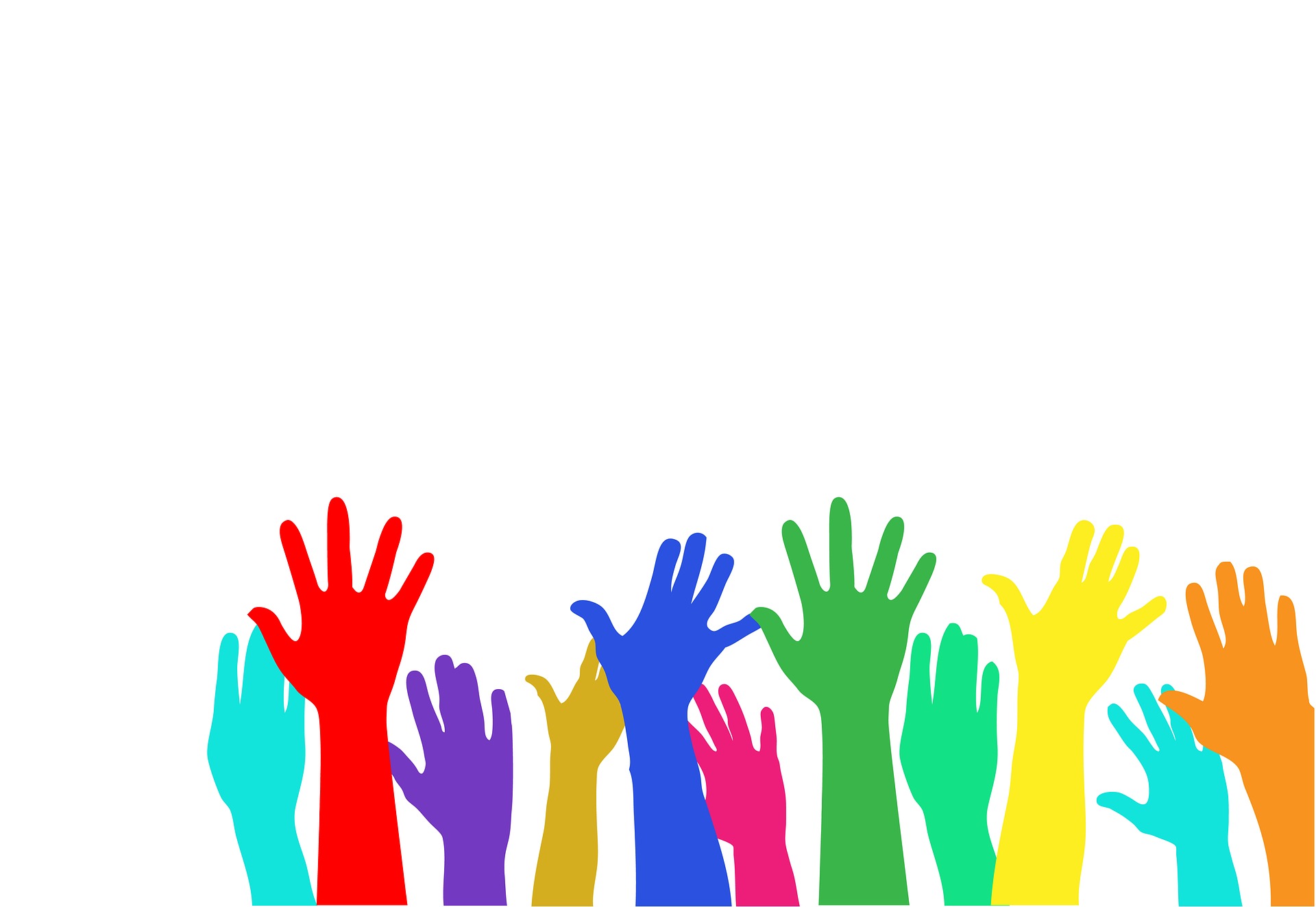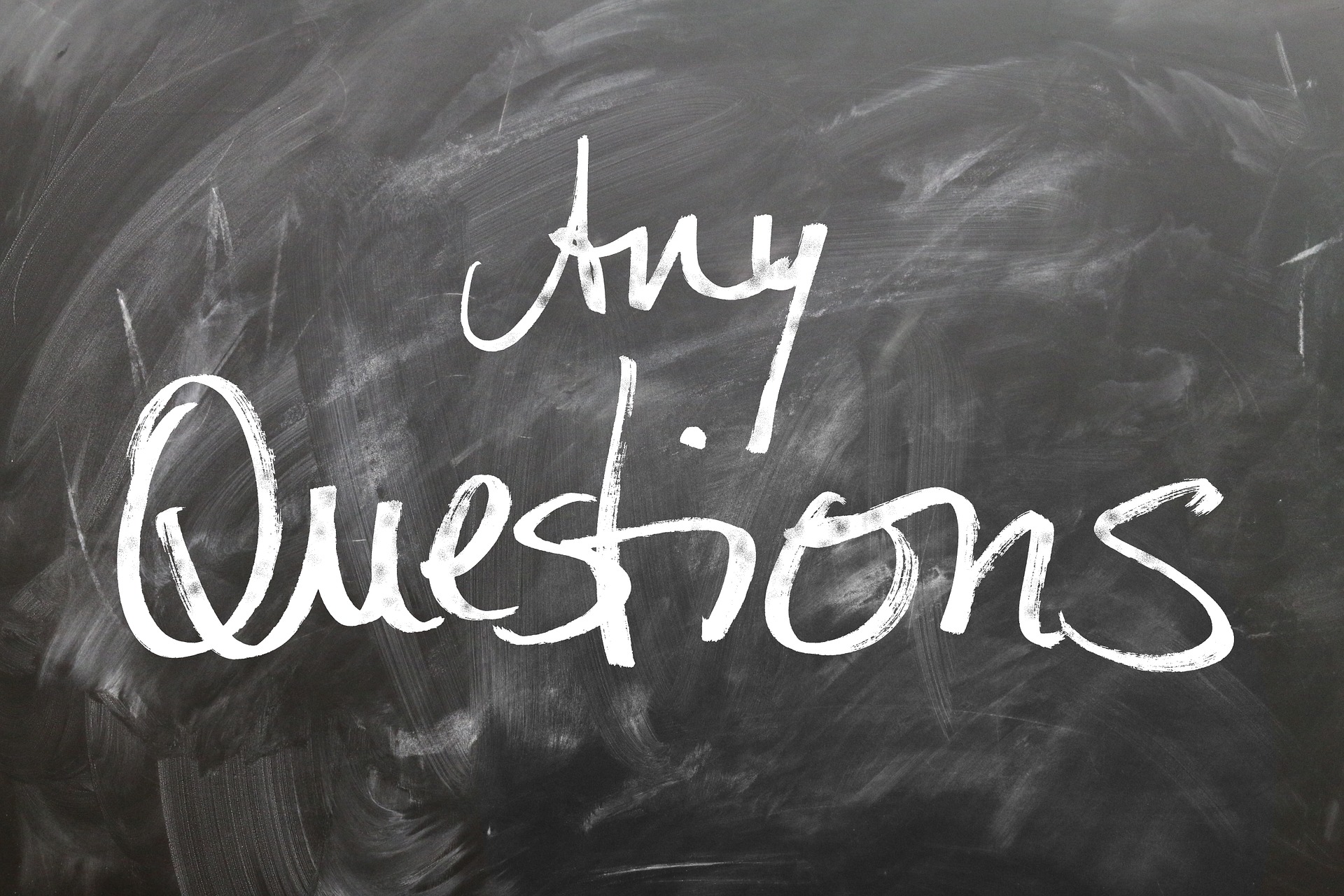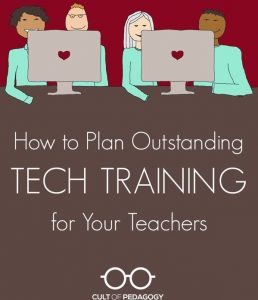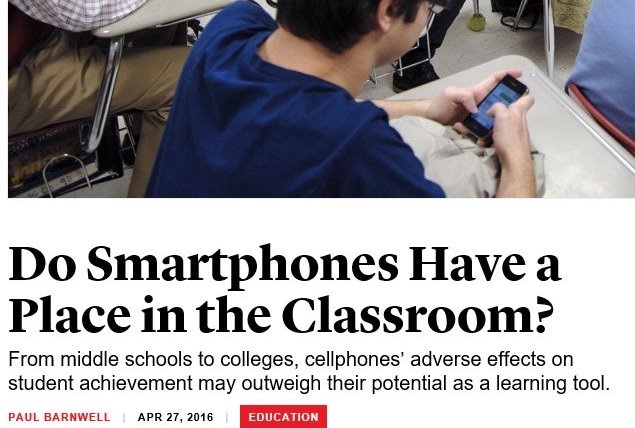Allegory
 An allegory is a story, poem, or picture that can be interpreted as having hidden meaning. Children’s picture books are the perfect way to present an allegory as they often tell a story through pictures and poems. Stories with allegories often teach morals and lessons. They also can have hidden political meanings. Allegories are a great way to introduce complex topics to children without getting into the mature details. Dr. Seuss often included allegories in his stories. The Sneetches is an allegory for racism where creatures spend their days hating on each other based on whether they have a star on their belly. In the book, all sneetches look identical with the exception that some have a star on their belly. The simplicity and consistency of the illustrations help children to see the ridiculousness of judging based on appearances.
An allegory is a story, poem, or picture that can be interpreted as having hidden meaning. Children’s picture books are the perfect way to present an allegory as they often tell a story through pictures and poems. Stories with allegories often teach morals and lessons. They also can have hidden political meanings. Allegories are a great way to introduce complex topics to children without getting into the mature details. Dr. Seuss often included allegories in his stories. The Sneetches is an allegory for racism where creatures spend their days hating on each other based on whether they have a star on their belly. In the book, all sneetches look identical with the exception that some have a star on their belly. The simplicity and consistency of the illustrations help children to see the ridiculousness of judging based on appearances.
Archetype
Archetypes are common characters or settings seen across many different stories. Some examples of archetypes are the hero, villain, mentor, ally, and the damsel in distress. Children’s literature is a good place to use archetypes because it allows for authors and artists to simplify concepts so that children can understand them. Children are easily able to recognize archetypes because they share common features across all books. The ally or sidekick, for example, typically provides comic relief. Therefore, he/she is always illustrated to be funnier looking (Timon and Pumbaa from the Lion King). The mentor is typically portrayed as older and wiser (Fairy Godmother in Cinderella). Classic children’s books are widely shared and read to kids by parents and teachers alike. This makes the archetypes instantly recognizable to children when they see variations in other books. In addition to that, children’s books often personify objects and animals to represent archetypes making them more appealing to children.
Agitprop
 Agitprop is political propaganda, originating from communists in Soviet Russia. The idea was to indoctrinate youth with new Soviet ideas through children’s picture books. Books would depict hard, unglamorous work in fields such as agriculture heroic and patriotic. Books shifted away from fairy tales to practical concerns and industry. For example, 80 000 Horses is a rhyming book about the first hydroelectric plant in Russia. There were also books depicting achievements such as Russian pilot Georgii Baidukov’s non-stop flight over the North Pole. In terms of art style, prior to 1934, these books featured a variety of art styles including Russian avant-garde. However, in 1934 the All-Union Soviet Congress of Writers declared that socialist realism was the only acceptable art style.
Agitprop is political propaganda, originating from communists in Soviet Russia. The idea was to indoctrinate youth with new Soviet ideas through children’s picture books. Books would depict hard, unglamorous work in fields such as agriculture heroic and patriotic. Books shifted away from fairy tales to practical concerns and industry. For example, 80 000 Horses is a rhyming book about the first hydroelectric plant in Russia. There were also books depicting achievements such as Russian pilot Georgii Baidukov’s non-stop flight over the North Pole. In terms of art style, prior to 1934, these books featured a variety of art styles including Russian avant-garde. However, in 1934 the All-Union Soviet Congress of Writers declared that socialist realism was the only acceptable art style.
Black Comedy
 Black comedy is humour that is used to make fun of subject matter that is generally considered serious, painful, dark, morbid, or taboo. In children’s literature, iconic images of black comedy can be found everywhere. In Little Red Riding Hood, the Woodsman cuts the Granny out of Wolf’s stomach with his axe. Roald Dahl’s books are all full of vengeful and sadistic characters, yet we laugh along.
Black comedy is humour that is used to make fun of subject matter that is generally considered serious, painful, dark, morbid, or taboo. In children’s literature, iconic images of black comedy can be found everywhere. In Little Red Riding Hood, the Woodsman cuts the Granny out of Wolf’s stomach with his axe. Roald Dahl’s books are all full of vengeful and sadistic characters, yet we laugh along.
Bricolage
 This is the construction or creation of a work of art using mixed media. Mixed media means that the image or artwork has been created using more than one medium or material. Collages and assemblages are two examples of types of art that use a variety of media. For picture books, the various media can be laid out on the page to play with tone, framing, pacing, etc. before making final decisions.
This is the construction or creation of a work of art using mixed media. Mixed media means that the image or artwork has been created using more than one medium or material. Collages and assemblages are two examples of types of art that use a variety of media. For picture books, the various media can be laid out on the page to play with tone, framing, pacing, etc. before making final decisions.
Coherence
Coherence is the idea that all aspects of an image should work together to create a complete whole. Once the purpose of a design has been established, all elements that make up that design should serve to achieve the purpose. True coherence is achieved when no single element of the design can be removed without distorting the overall appearance of the design. Everything in the image should serve a functional purpose.
Collage
A collage is a work of art made of various materials such as paper, cloth, or wood glued onto a surface. A series of smaller objects and materials are placed next to each other and glued down to create a visual of a different image. Each individual object is meaningless on its own, but together with the rest of the collage materials can become something greater than the sum of each part.

Colophon
A colophon is a brief statement which contains publication information of a book. This information can include the place of publication, the publisher, and the date of publication. A colophon can also be an identifying mark used by a publisher or printer. A publisher or printer’s emblem can be used as an identifying feature on its books and other works.
Connotative
Connotative texts and illustrations are the ideas and emotions associated with the words and pictures of a book. They are not literal translations. Connotations are suggested or implied rather than explicitly stated. Connotations depend on personal experience, associations, and culture. The way a children’s book is illustrated can help to cannote certain feelings and messages. For example, a house can cannote a sense of belonging and comfort. The literal interpretation of the house would simply be structure.
Continuity
This is the idea that the characters and objects in the book remain the same throughout the book. It is known as one of the trickiest aspects of illustrating a picture book as the characters’ features and proportions must remain the same from any angle. In addition to characters, background details must be accurate from all angles as well.
Chapbook
These were small, affordable, and cheaply made books popular from the 17th to 19th century. They were small and despite being cheaply made, often featured good illustrations and well-crafted title pages. The readership of these books was largely the poor, or children of the middle class. Literacy was increasing at the time, and these books were aimed at readers whose skills were rudimentary.

Denotative
Denotative aspects of text and illustrations in children’s books are literal. The words in the book mean exactly what they say, and the pictures are literal translations of the text without any extra hidden meanings. These are especially helpful for emerging readers where the picture can help readers decode the text.
Dialogic
Dialogic reading is a type of reading that encourages children to have a dialogue around the text that they are reading. These conversations are designed to help develop vocabulary and verbal skills, as well as understand story components and narrative structure. It explores the relationship between the words of a book and its pictures. Some books encourage dialogic reading by including questions along with pictures that suggest answers to those questions.
Didactic
Didactic children’s literature is designed not only to entertain, but also teach. The stories are designed to help children understand right from wrong. From very early on, authors realized that instruction is more effective when it is entertaining. Children are much more likely to learn a lesson if it is buried in a story about animals and monsters. For example, The Boy Who Cried Wolf is far more effective at teaching the consequences of lying over simply telling a child not to lie.

Dissonance
Dissonance is a mental state of conflict. In terms of an illustrated story, dissonance presents something to the reader/viewer that doesn’t quite make sense at first but keeps them captive wanting more to complete the story. This is created by placing elements together that are disharmonious or clash with one another.
Doggerel
Doggerel is a form of poetry that features irregular rhythm and rhythm. The poetry is purposefully irregular for comic effect. Poetry is often the first literature presented to a child, often in the form of nursery rhymes, ballads, and doggerel. Poetry for children is often written with awkward rhythm and labored rhymes because there is the assumption that they are not developed enough yet to appreciate fine poetry.
Dummy
A book dummy is a mock-up of a picture book in the same size and shape that the final product will be. It is the entire book laid out in sketch form with the text in place. The dummy is the end of the storyboarding process where sketches are made to see how the narrative fits together. The dummy should contain the same number of pages as the final product. They are especially important for page-turning books to determine the rhythm and pacing of the storytelling.

Dystopia
A dystopia is a community or society that is undesirable or frightening. The direct translation of dystopia from Greek to English is “bad place.” Dystopias are often depicted as having tyrannical governments, environmental disasters, and other cataclysmic declines in society. Dystopian themes are common amongst the YA genre of books, but can be found in many children’s picture books as well. Dr. Seuss regularly wrote about dystopian ideas in his books such as The Lorax, and The Sneetches.
Epiphany
In a story, an epiphany is a moment in a story when a character achieves realization, awareness, or feeling of knowledge, after which he/she sees events through a new light. Children’s literature often features characters who reach an epiphany in order to teach a moral or lesson. The Boy Who Cried Wolf reaches an epiphany when nobody will believe him after lying so much.
Epistolary
An epistolary is a literary work told through a series of documents. They can be presented in the form of letters, diary entries, news clippings, e-mails, etc. The book can be told through a single perspective, or through multiple perspectives. Using this form of literature helps children understand the role of communication in shaping lives.

Frame Narrative
 A frame narrative is a narrative technique where a main story is composed to tell one or more smaller stories. They are stories within stories. Frame narratives are often organized as the gathering of a bunch of people exchanging their own tales. In order to be considered a frame narrative, the main story must act as an occasion for telling the other stories. If the framing story is the primary interest of the story, then the story is typically not a frame narrative. Once Upon a Cool Motorcycle Dude is a frame narrative because two children are telling their own version of a fairy tale, but disagree on how it will end.
A frame narrative is a narrative technique where a main story is composed to tell one or more smaller stories. They are stories within stories. Frame narratives are often organized as the gathering of a bunch of people exchanging their own tales. In order to be considered a frame narrative, the main story must act as an occasion for telling the other stories. If the framing story is the primary interest of the story, then the story is typically not a frame narrative. Once Upon a Cool Motorcycle Dude is a frame narrative because two children are telling their own version of a fairy tale, but disagree on how it will end.
Framing
Framing is the arrangement of visual elements in an image. The placement of the subject in the image in relation to the other elements in the image can help to focus the viewer’s attention. This is especially important in children’s books because young children aren’t always aware of what they are supposed to be paying attention to. The illustrations in a picture book help to drive the narrative just as much as the text (sometimes more). If it isn’t clear what the reader should be focusing on, it could make the book a difficult read for a child. In addition to that, framing can make an image more aesthetically pleasing. Framing can be accomplished in a number of ways including changing the distance between the nearest and furthest points in which an object will be in focus (depth of field), use of negative space, vignetting, distorting perspective, and placing foreground elements along the sides of the frame (repoussoir).
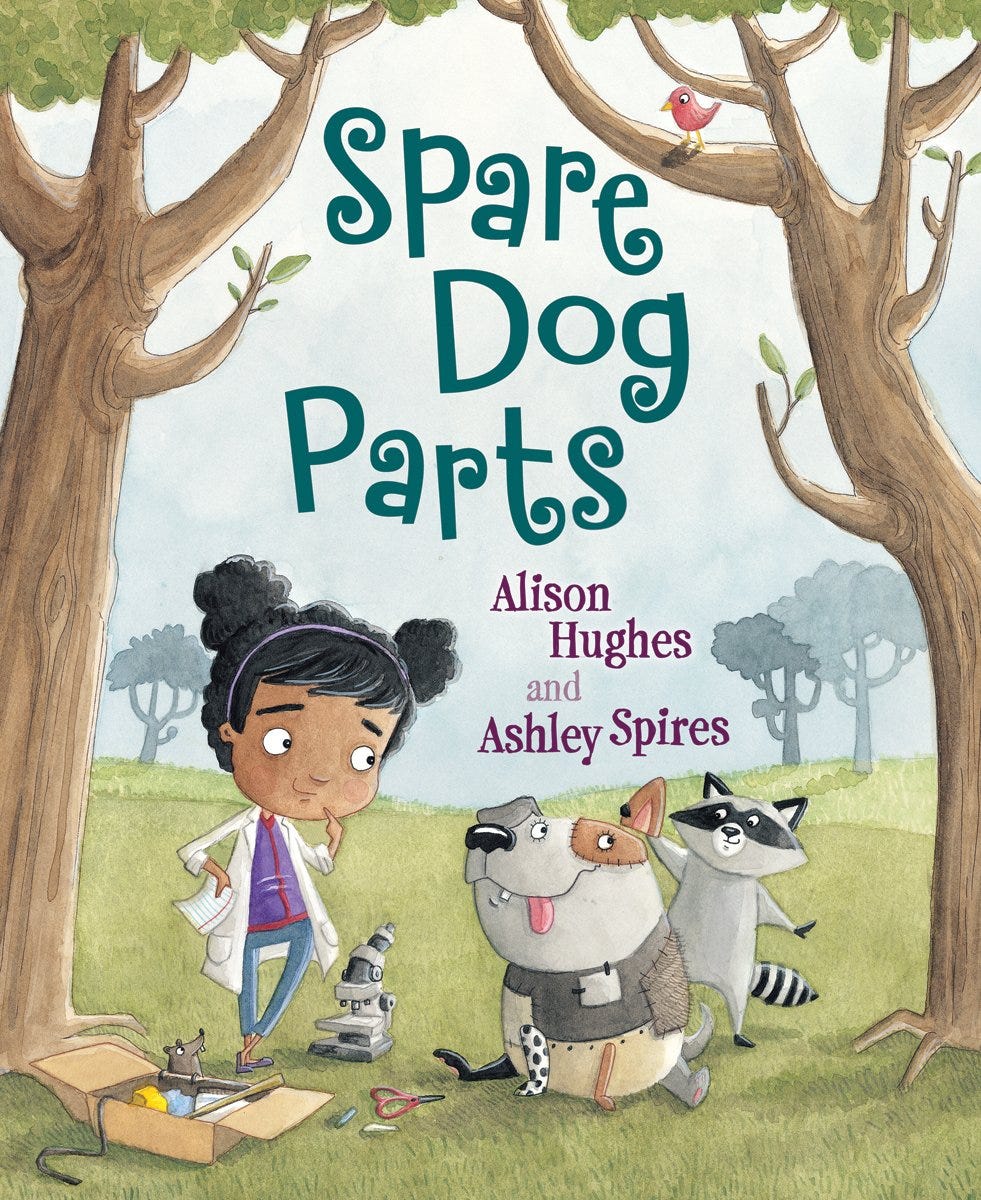
Gestalt
Gestalt means ‘unified whole’ and describes the way in which humans see a unified whole before seeing the individual parts. There are six Gestalt principles. The first is similarity. When objects appear similar to one another, viewers will see the individual elements as part of a pattern or group. The second is continuation which refers to the eye preferring to see a single continuous figure rather than separate lines. The third is closure which describes the human tendency to see closed shapes. The forth is proximity which uses the close arrangement of objects to create a group association amongst them. The fifth is figure/ground which describes the eye’s tendency to separate objects from their background. The last principle is symmetry/order. This principle states that if a composition gives a sense of disorder or imbalance, the viewer will waste time trying to fix the problem.
Here is an example of the Gestalt principle of closure. The brain fills in the missing lines to complete the panda.

Graphic Novel
A graphic novel is a book made up of comics content. They use a combination of illustrations and words to tell a story. Graphic novels tend to be longer than comic books and usually tell a single story from beginning to end. Comic books are serialized stories that take multiple issues where the story unfolds over months or even years. Because plots don’t have to be broken up over several issues in graphic novels, plots can be more complex and detailed, since readers don’t have to remember details from past issues.
Gutter
In picture books, gutters are the place between two panels where the binding meets. Designers of books need to pay attention to these as parts of illustrations could be lost in them. The use of white space could avoid losing illustrations. Other times, illustrations blend right into the gutter. In comics and graphic novels, the gutter is the space between panels. The gutter is essential for comics because it allows for closure to happen. Comics do not allow for actions to happen in real-time so there must be a way to convey the passage of time and movement. Gutters create a transition from one moment to the next. They can take two separate images and transform them into a single idea. While the reader can’t see what is happening within the gutter, assumptions can be made that allow the panels to be related.
Halftone
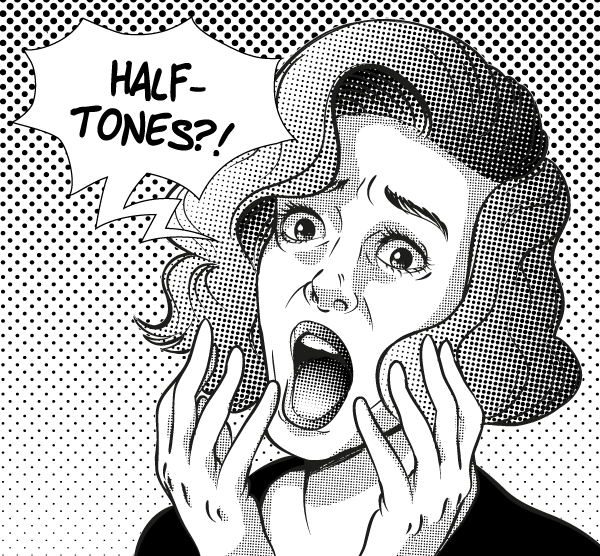 A halftone image is an image created using discrete dots rather than continuous tones. When viewed from a distance, the dots blend together and create the illusion of continuous lines and shapes. Works of art can be created using halftones as an artistic choice. Regular artwork can also be “halftoned” when printed in order to save ink. Many magazines and newspapers halftone their images for this reason.
A halftone image is an image created using discrete dots rather than continuous tones. When viewed from a distance, the dots blend together and create the illusion of continuous lines and shapes. Works of art can be created using halftones as an artistic choice. Regular artwork can also be “halftoned” when printed in order to save ink. Many magazines and newspapers halftone their images for this reason.
Hybrid Picture Book
A hybrid picture book is a picture book that takes on elements of other formats as well such as a novel or graphic novel. For children who are ready to move on from picture books to novels, a hybrid can be a good transition. For example, Princess Cora and the Crocodile is an early-grade to mid-grade novel which is heavy on illustrations. It looks like a picture book but reads like a novel.

Hypertext
Hypertext fiction is a genre of literature found mostly online and designed for children. They can be compared to interactive versions of Choose Your Own Adventure books. It is characterized by reader interaction and non-linearity. The reader chooses links to move from one node of text to the next, essentially choosing to help guide where the story will go.
Illustration
An illustration is an artist created visual representation which explains, clarifies, illuminates, or decorates the written text. Contemporary illustration uses a range of styles and techniques including drawing, painting, printmaking, collage, montage, digital design, and 3D modeling. In children’s literature, illustrations can serve a number of purposes. For picture books, illustrations can provide visual clues for the story. For graphic novels, illustrations can help tell the story and fill in gaps where the text isn’t enough.
Illustrated book
Illustrated books are stories with illustrations that help to enhance the story. The illustrations may describe a particular scene or describe what the story is about. The story itself is complete and can be understood without the illustrations. These books can help reluctant readers pick up and gain interest in books. In a picture book, the illustrations serve to tell the story along with the text (or tell the story all on its own if it is a wordless book). An illustrated book’s illustrations simply describe the story and serve to enhance the reading experience, however, the story can stand on its own without them. Illustrated books are not limited to the standard of 32 pages of a typical picture book. They can be novels that are hundreds of pages long.
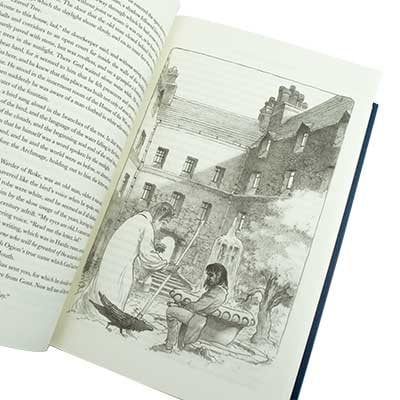
Implied Reader
An implied reader is a hypothetical reader who is likely to get the most out of what the author is intending. When a writer writes a piece, they do so with certain readers in mind and uses jokes, metaphors, and a writing style that they believe those readers will most appreciate. The implied reader can also be seen as the reader who creates the text for themselves, compared to the actual reader colours the mental images they got from the reading with their own existing stock of experiences.
Information Books
Information books give factual information about the natural or social world. Its purpose is to inform. Information books can take many forms. They can be large amounts of text organized in chapters. They can take the form of a picture book which will include illustrations along with text. They can also be fact books which contain more charts and graphs. Information books are the largest single genre in children’s literature and cover a wide variety of topics.
Leitmotif
Leitmotifs are recurring metaphorical representations that occur throughout a book. They help to convey a story’s underlying message through repeated occurrences in a narrative. They can also help to develop other aspects of the narrative as well. In addition to theme, leitmotif can help to build on elements of plot, character, and setting.
Literacy
In the traditional sense, literacy has been thought of as the ability to read and write. Today, we have a much broader definition of literacy that goes beyond the written word. It can be defined as the ability to acquire, construct, and communicate meaning in all aspects of daily life. Literacy can be broken down into visual literacy, digital literacy, critical literacy, etc. Understanding how to read and write is only a small part of what literacy is. Children need to develop the skills to interpret the illustrations in books, make connections between texts, understand when they are being manipulated, and much more.
Malapropism
Malapropism is the use of an incorrect word in place of a word with a similar sound, which often results in a humorous utterance. For example, someone might say “Having one wife is called monotony” instead of “Having one wife is called monogomy.” Malapropisms are a good way to combine learning and fun for children. When children picture in their mind what is being said and what the speaker intended to say, the silly scenes stretch their imagination, teach vocabulary, and reinforce correct spelling.

Manga
Manga is a Japanese style of comic that was developed in the late 19th century. The medium has works in a wide variety of genres including actions, romance, sports, historical drama, comedy, sci-fi, horror, and more. Manga stories are typically printed in black and white, but some colour mangas exist. In Japan, Manga is usually serialized in large manga magazines. If a series is successful enough, a collection of chapters may be reprinted in a paperback book. Traditional manga books are read from right to left.

Metafictive
A text that is metafictive is one that subverts traditional, straightforward storytelling. It emphasizes its own constructiveness to constantly remind the reader that they are reading a fictional story. It is often used as a form of parody or undermine literary conventions and explore the relationship between literature, life, and art. Metafiction in children’s books has the added benefit of illustrations. These illustrations can add to the metafictive nature of the story. Wiesner’s The Three Pigs does a great job of this with the pigs constantly breaking the fourth wall discussing what is happening with the reader.

Metacognition
Metacognition is the ability to think about thinking. Children moving from egocentric thinking to being able to put themselves in someone else’s shoes is the beginning of metacognition. It is an essential skill in problem-solving because children need to be able to change their thinking when frustrated. Books can open the window to metacognition because they can show a character’s thinking process and promote critical thinking.
Metalanguage
Metalanguage is the language we use to refer to and discuss language. When studying children’s literature, metalanguage is useful for the discussion of books and images. Metalanguage allows us to discuss how meaning can be made from images and text. The language itself can be discussed using words such as ‘verb’ or ‘sentence’ or ‘noun.’ The way the text looks can be discussed using words such as ‘font.’ Images can be discussed using words such as ‘background’ and ‘composition.’
Multimodal
Multimodal literature is literature that has multiple ways of communicating or representing meaning. In a children’s book, this can take various forms. The typesetting could be unusual to convey meaning. For example, text could be bumpy, upside down, or nonlinear. The size, font, and colour of the letters may also convey meaning. Multimodality could mean that the book encourages interaction with the reader. Are there flaps to reveal hidden pictures or words? The images in a book could make it multimodal. Perhaps the images portray a different story than the text. Multimodal books could also mean providing several different elements in them such as comics, letters, and instructions.
Bumpy text is a multimodal way to convey extra meaning.

Narrative
A narrative is a story that is written or told. It is an engaging writing style that invites the reader into the author’s world. Narratives are social and are at the heart of how we communicate as human beings. They are a part of who we are and how we share as human beings. A good narrative invites discussion and participation. They can be retold, added to, and changed over time. During most people’s childhoods, narratives are what are used to help guide behaviour, teach history, form cultural identity and values, and teach about community.
Parody
Parody is an imitation of a particular artist, writer, or genre, with deliberate exaggerations for comic effect. The comedic effect is achieved through overstressing noticeable features in a given piece of art, music, writing or type of genre. A parody is funny but can also have a lot to teach. Their humorous nature invites people to read them, and their magnification of artistic styles can help the reader to understand the qualities of the art or writing that is being parodied. In children’s literature, well-known stories are often parodied to great comedic effect.

Pastiche
A pastiche is a work of art or literature that mimics the style of another artist or writer. Unlike parody, the goal of a pastiche is to celebrate rather than mock the work that it is imitating. In literature, because the work cannot exist without the work it is imitating, a pastiche is always an example of intertextuality. A pastiche can also incorporate the styles of multiple artists.
Picturebook
A picturebook is a book, typically made for children, where the illustrations share equal or more importance than the text. They are typically 32 pages in length and first appeared in the 18th century. Due to its limited length, the book must convey mood, setting, and emotion with few words. Picturebooks tell a story and invite the reader to enter the world it creates. Illustrations in picturebooks build upon one another to expand the text (if there is any). The imagery is sequential and helps to bring the story to life.
Reading Path
A reading path is a way that the text or other book feature determines the order in which we read it. It is the path your eyes take through a visual text. Reading paths that contain visual elements are more open to interpretation. Factors that affect the viewers’ gaze around a visual text include vectors (visible or invisible lines that lead your eye from one place to another) and salience (elements that stand out and draw the viewer’s attention).
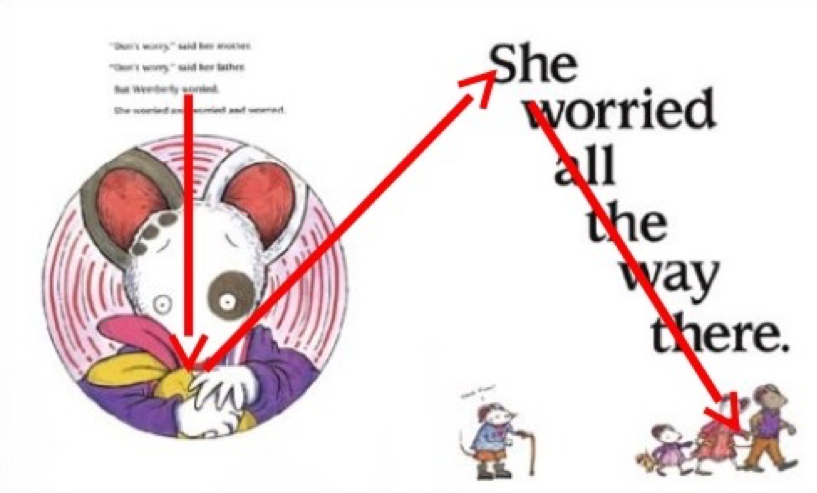
Salience
This refers to the elements in an image that stand out and draw the viewers attention. Salience can be thought of as the focal points or features in a composition that most grab your attention. Images can be made salient through placement (objects placed to the top or left of the page tend to carry more weight), colour (contrasting colours or playing with light and dark), size (making some elements larger than others), focus (purposefully blurring or making sharp certain elements), distance (objects that appear closer take more prominence), or a combination of these.
Storyboard
A storyboard is a graphic organizer that displays the sequences and text of a picture book before it is made. It can help to pace a story, think about what can be left out, and what can be shown in the illustrations. It can help to think of where to place less emphasis on text and more on illustrations. Storyboards are different from dummies in that you can see the whole story at once. A dummy is a simulation of the real book. A storyboard helps to visualize the entire manuscript at once.

Typography
Typography is the arrangement and design of words on a page. This is important in picture books because as children learn to decode words, they can see them brought to life in a story. The typography can affect the way a book is read and change the tone of a sentence. As typeface grows larger, the perception of the voice grows louder. As typeface shrinks, the voice goes softer. The font could change to show different perspectives, timeframes, or distinguish narration. Typography could be integrated more into the illustrations to avoid distraction, or make itself more prominent to distinguish it from the illustrations.
Vectors
A vector is a line that leads your eye from one element to another. It can be visible or imaginary. Aspects of an illustration that could create vectors include pointing fingers and extending arms. Vectors can be objects or parts of objects such as arms, legs, a pole, or the side of a house. Invisible vectors can also be created through methods such as setting the direction of a character’s gaze.
Visual Literacy
Visual literacy is the ability to read, understand, interpret, and create visual texts. Picture books are an ideal way to teach children how to become visually literate. Before children can even read, they will gain interest in the pictures of a book. They will question what is going on or state what it reminds them of. Teachers and parents can use picture books to encourage discussion and develop visual literacy by pointing out visual elements such as special fonts, perspective, art style, or expressions. Older students can use graphic novels to further develop their visual literacy as they offer even more opportunities for discussion.
Citations
(n.d.). Retrieved October 4, 2019, from http://wpr-public.s3.amazonaws.com/ttarchive/s3fs-public/images/detail/sneetches_0.jpg.
(n.d.). Retrieved October 4, 2019, from https://images-na.ssl-images-amazon.com/images/I/41carZiACoL._SX374_BO1,204,203,200_.jpg.
(n.d.). Retrieved October 4, 2019, from https://mir-s3-cdn-cf.behance.net/project_modules/disp/a0995939004681.5606a694b9fa0.jpg.
(n.d.). Retrieved October 4, 2019, from https://images-na.ssl-images-amazon.com/images/I/51hgOnau5AL._SY347_BO1,204,203,200_.jpg.
(n.d.). Retrieved October 4, 2019, from https://www.bl.uk/britishlibrary/~/media/bl/global/dl romantics and victorians/collection-item-images/u/n/k/unknown 1810 b20110 34.jpg?w=608&h=342.
(n.d.). Retrieved October 4, 2019, from https://encrypted-tbn0.gstatic.com/images?q=tbn:ANd9GcQHPZtuw1FT-ngt6WygZl1GYvKUZKbI2bT7j8cN47EKNWf8pugz7Q.
(n.d.). Retrieved October 4, 2019, from https://static.theworks.co.uk/images/9781786170002_Z.jpg.
(n.d.). Retrieved October 4, 2019, from http://3.bp.blogspot.com/-r860wakq6Qo/T5nalXTLDlI/AAAAAAAAAa8/4ATs0GfBMyU/s1600/dummy-real-2.jpg.
(n.d.). Retrieved October 4, 2019, from https://images-na.ssl-images-amazon.com/images/I/61aXTUrkFQL._AC_SY400_.jpg.
(n.d.). Retrieved October 4, 2019, from https://images-na.ssl-images-amazon.com/images/I/51ZfPAabgEL.jpg.
(n.d.). Retrieved October 4, 2019, from https://miro.medium.com/max/1962/1*KR2PO6Ffmx38-MS11e5qMg.jpeg.
(n.d.). Retrieved October 4, 2019, from https://uploads.toptal.io/blog/image/125750/toptal-blog-image-1522045535498-3cfb27ba5cf1188777b80c9ea2f652b2.png.
(n.d.). Retrieved October 4, 2019, from https://cms-assets.tutsplus.com/uploads/users/833/posts/25121/image/Halftones.png.
(n.d.). Retrieved October 4, 2019, from http://brianfloca.com/images/princess-cora-68-69.jpg?crc=101186295.
(n.d.). Retrieved October 4, 2019, from https://cdn.waterstones.com/images/00120154-400×400.jpeg.
(n.d.). Retrieved October 4, 2019, from https://i.imgur.com/Och27KG.jpg.
(n.d.). Retrieved October 4, 2019, from http://bleachsoulevolution.com/forum/manga/mangas/Naruto/630 – What We Bury/630_17.png.
(n.d.). Retrieved October 4, 2019, from https://i.pinimg.com/originals/e9/76/95/e976952523311d185368ce1b7a2b79bd.jpg.
(n.d.). Retrieved October 4, 2019, from https://thiskidreviewsbooks.files.wordpress.com/2011/12/buspage1.jpg.
(n.d.). Retrieved October 4, 2019, from https://images-na.ssl-images-amazon.com/images/I/91euveRPUPL.jpg.
(n.d.). Retrieved October 4, 2019, from http://visual-literacy-skills.weebly.com/uploads/6/8/4/4/68442259/231599634.png.
(n.d.). Retrieved October 4, 2019, from https://taralazar.files.wordpress.com/2016/10/brunhilda-storyboard.jpg.
https://images.penguinrandomhouse.com/cover/9780763619848. (n.d.).

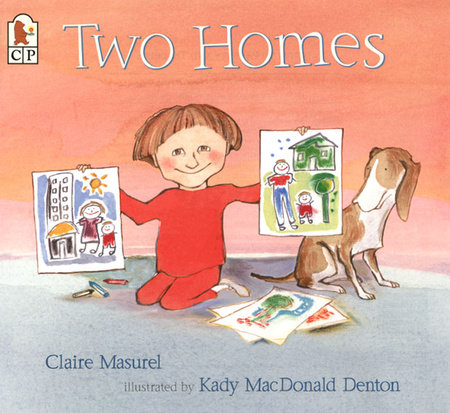


 The Hate U Give led me to search for other books with diverse casts of characters. I didn’t necessarily want a book that had an overt message about race or prejudice. I was just looking for stories with characters from different backgrounds doing normal things with each other. That in itself sends a powerful message. Exposing children to books with characters from different cultures positively interacting with each other makes them more comfortable with interacting with people of other races themselves (Aaronson and O’Brien, 2014). I was reminded of Cinder by Marissa Meyer which features an extremely diverse cast of characters including many people of colour and several disabled characters. I like this book because it is a sci-fi take on the Cinderella story told in a Star Wars style epic tale that just so happens to feature people from all over the world (and moon). This is the perfect book to teach along with any fairy tale or fractured fairy tale unit.
The Hate U Give led me to search for other books with diverse casts of characters. I didn’t necessarily want a book that had an overt message about race or prejudice. I was just looking for stories with characters from different backgrounds doing normal things with each other. That in itself sends a powerful message. Exposing children to books with characters from different cultures positively interacting with each other makes them more comfortable with interacting with people of other races themselves (Aaronson and O’Brien, 2014). I was reminded of Cinder by Marissa Meyer which features an extremely diverse cast of characters including many people of colour and several disabled characters. I like this book because it is a sci-fi take on the Cinderella story told in a Star Wars style epic tale that just so happens to feature people from all over the world (and moon). This is the perfect book to teach along with any fairy tale or fractured fairy tale unit. I was pleasantly surprised to find that there wasn’t any shortage of books dealing with social justice issues. However, I wanted to find something Canadian for a couple of reasons. First, I think it’s important to support Canadian authors. Second, I think it’s important for kids to read about things they are familiar with. Dodger Boy by Sarah Ellis takes place in 1970’s Vancouver where thirteen-year-old Charlotte meets Tom, a draft dodger escaping the Vietnam war. The book teaches about topics such as conflict and war, civil disobedience, censorship, and much more. As Charlotte learns about these issues and begins to form her worldview, I think it will make the readers think about their own beliefs as well.
I was pleasantly surprised to find that there wasn’t any shortage of books dealing with social justice issues. However, I wanted to find something Canadian for a couple of reasons. First, I think it’s important to support Canadian authors. Second, I think it’s important for kids to read about things they are familiar with. Dodger Boy by Sarah Ellis takes place in 1970’s Vancouver where thirteen-year-old Charlotte meets Tom, a draft dodger escaping the Vietnam war. The book teaches about topics such as conflict and war, civil disobedience, censorship, and much more. As Charlotte learns about these issues and begins to form her worldview, I think it will make the readers think about their own beliefs as well. I next looked for a book where I could find my own culture represented. I think that people have underestimated the power and demand for cultural representation in all forms of media. Look to the success of Black Panther and Crazy Rich Asians. We have our own cultures represented in stories so that we can see ourselves in the characters and have our stories told. “Multicultural literature is much more than telling the story about an individual in a particular place or time; it is a story of a group’s experiences that reflect their history, their current existence, and their future” (Turner, 2016). I came across two books. The first was See You in the Cosmos by Jack Cheung. It features a Filipino American boy journeying across America, recording what life is like, and wanting to launch his golden iPod into space. I thought that this would be a good book to pair with any space-themed unit. The second book I found I had already read. It is a graphic novel called American Born Chinese by Gene Luen Yang. I was particularly engaged with this book because it told what it meant to be Chinese in three different ways: the Chinese myth of the Monkey King, a Chinese kid adapting to America, and Chinese stereotypes we have to deal with.
I next looked for a book where I could find my own culture represented. I think that people have underestimated the power and demand for cultural representation in all forms of media. Look to the success of Black Panther and Crazy Rich Asians. We have our own cultures represented in stories so that we can see ourselves in the characters and have our stories told. “Multicultural literature is much more than telling the story about an individual in a particular place or time; it is a story of a group’s experiences that reflect their history, their current existence, and their future” (Turner, 2016). I came across two books. The first was See You in the Cosmos by Jack Cheung. It features a Filipino American boy journeying across America, recording what life is like, and wanting to launch his golden iPod into space. I thought that this would be a good book to pair with any space-themed unit. The second book I found I had already read. It is a graphic novel called American Born Chinese by Gene Luen Yang. I was particularly engaged with this book because it told what it meant to be Chinese in three different ways: the Chinese myth of the Monkey King, a Chinese kid adapting to America, and Chinese stereotypes we have to deal with. Graphic novels are actually where I learned about diversity and prejudice. I spent much of my childhood hanging out at 7-Eleven reading X-Men comics off the rack. Those comics dealt with “mutants” being persecuted against for being different. Garrison and Gavigan (2019) found that graphic novels show higher numbers of racial diversity than traditional books. This makes them ideal as tools to teach social justice issues. In addition to that, the added visual component of the format has several advantages over simple text. Boerman-Cornell et al. (2017) call the interplay between the visuals and text picture/text hybridity. They say that this combination of words and pictures helps students to create meaning in a new way and has the following benefits:
Graphic novels are actually where I learned about diversity and prejudice. I spent much of my childhood hanging out at 7-Eleven reading X-Men comics off the rack. Those comics dealt with “mutants” being persecuted against for being different. Garrison and Gavigan (2019) found that graphic novels show higher numbers of racial diversity than traditional books. This makes them ideal as tools to teach social justice issues. In addition to that, the added visual component of the format has several advantages over simple text. Boerman-Cornell et al. (2017) call the interplay between the visuals and text picture/text hybridity. They say that this combination of words and pictures helps students to create meaning in a new way and has the following benefits: Builds student’s background knowledge
Builds student’s background knowledge Roughly thirty percent of our school is First Nations so I wanted to make sure Aboriginal content was represented in my curation. Most of our First Nations students come from the Musqueam reserve, but I was unable to find any Musqueam books. One of the books that our school recently bought was This Place: 150 Years Retold. It features 10 different stories told by different indigenous authors and illustrators. The stories and art are so different that the book will have something for everyone. I also like how it tells stories from different indigenous cultures from across Canada.
Roughly thirty percent of our school is First Nations so I wanted to make sure Aboriginal content was represented in my curation. Most of our First Nations students come from the Musqueam reserve, but I was unable to find any Musqueam books. One of the books that our school recently bought was This Place: 150 Years Retold. It features 10 different stories told by different indigenous authors and illustrators. The stories and art are so different that the book will have something for everyone. I also like how it tells stories from different indigenous cultures from across Canada.  Another book I found that I really liked was Red: A Haida Mana by
Another book I found that I really liked was Red: A Haida Mana by  Looking at graphic novels, I don’t think it would be right not to include Shaun Tan’s The Arrival into this curation. It is amazing how Tan was able to capture the immigrant experience without the use of any words. Reading the book forces you to use your imagination to understand what it is like to emigrate to a new place. Lysaker and Miller (2012) contend that the lack of words encourages social imagination. Because there is no description of what is happening, the reader must imagine what the characters feel like and are going through. This process helps to build empathy and that is a primary factor in helping us understand each other as people.
Looking at graphic novels, I don’t think it would be right not to include Shaun Tan’s The Arrival into this curation. It is amazing how Tan was able to capture the immigrant experience without the use of any words. Reading the book forces you to use your imagination to understand what it is like to emigrate to a new place. Lysaker and Miller (2012) contend that the lack of words encourages social imagination. Because there is no description of what is happening, the reader must imagine what the characters feel like and are going through. This process helps to build empathy and that is a primary factor in helping us understand each other as people. The Arrival reminded me of a picture book that I had found earlier in this course about a girl in a refugee camp because both dealt with people having to leave home. Lubna and Pebble by Wendy Meddour is really a book about friendship and coping with a difficult situation. I like how the book handles teaching about the refugee crisis in a subtle and graceful manner. The issue is never overtly brought up, and there is a lot going on in the artwork that can be dissected.
The Arrival reminded me of a picture book that I had found earlier in this course about a girl in a refugee camp because both dealt with people having to leave home. Lubna and Pebble by Wendy Meddour is really a book about friendship and coping with a difficult situation. I like how the book handles teaching about the refugee crisis in a subtle and graceful manner. The issue is never overtly brought up, and there is a lot going on in the artwork that can be dissected. Noah Chases the Wind by Michelle Worthington is another book that addresses an issue without directly mentioning it. Noah is autistic (but this is never mentioned) and experiences the world differently. As Noah chases the wind to find out where it goes, the book takes us on an adventure and encourages the reader to think about the world in different ways. These are my favourite kinds of books. I like it when books teach without being overtly preachy.
Noah Chases the Wind by Michelle Worthington is another book that addresses an issue without directly mentioning it. Noah is autistic (but this is never mentioned) and experiences the world differently. As Noah chases the wind to find out where it goes, the book takes us on an adventure and encourages the reader to think about the world in different ways. These are my favourite kinds of books. I like it when books teach without being overtly preachy. Emmanuel’s Dream: The True Story of Emmanuel Ofosu Yeboah by Laurie Ann Thompson is Ghana’s version of Terry Fox. This is a powerful story about a boy who was written off due to having a disability but set out to prove to the world that he was as capable as anyone else. He made it a point to work, earn money, and eventually rode across Ghana to try and change the way people viewed disabilities. True stories are especially powerful when trying to inspire change because kids can see that it is real. Emmanuel is real and if he can change the world, then so can anyone else. Also, kids can see how stereotypes about disabled people simply aren’t true.
Emmanuel’s Dream: The True Story of Emmanuel Ofosu Yeboah by Laurie Ann Thompson is Ghana’s version of Terry Fox. This is a powerful story about a boy who was written off due to having a disability but set out to prove to the world that he was as capable as anyone else. He made it a point to work, earn money, and eventually rode across Ghana to try and change the way people viewed disabilities. True stories are especially powerful when trying to inspire change because kids can see that it is real. Emmanuel is real and if he can change the world, then so can anyone else. Also, kids can see how stereotypes about disabled people simply aren’t true. Speaking of true stories, I am Not a Number is the true story of author Jenny Kay Dupuis’ experience in residential school. I was looking for a picture book that discussed the topic of residential schools because I wanted visuals to go along with a story. In addition, I wanted something that could be read aloud to encourage discussion throughout the book. This book feels like it was meant for an older audience despite it being a picture book. It is not a quick read, and there is a lot to be dissected in the story. This makes it ideal for teaching to my seventh graders. Sometimes, when I read a picture book to my class, they feel it is too young for them. This book feels mature.
Speaking of true stories, I am Not a Number is the true story of author Jenny Kay Dupuis’ experience in residential school. I was looking for a picture book that discussed the topic of residential schools because I wanted visuals to go along with a story. In addition, I wanted something that could be read aloud to encourage discussion throughout the book. This book feels like it was meant for an older audience despite it being a picture book. It is not a quick read, and there is a lot to be dissected in the story. This makes it ideal for teaching to my seventh graders. Sometimes, when I read a picture book to my class, they feel it is too young for them. This book feels mature. For the last book in this curation, I wanted to find a book of poetry. I remember hating poetry units and thinking they were terribly boring. Today, I think that the analysis of poetry is an important skill in life. Music is a form of poetry, but most kids just blindly listen to music without ever dissecting what is actually being said. Some artists have important messages that are being completely lost because kids aren’t listening with a critical ear. On the flip side, there are people who mindlessly repeat lyrics that may be offensive or have a negative message. In order to teach how to critically analyze poems, students need to be engaged. They have to think it’s cool, otherwise, they will be bored as I was. Hip Hop Speaks to Children is a collection of kid-friendly poems and songs that comes with a CD of performances as well. Reading lyrics from artists like Kanye West will hopefully make learning about poetry cool, and get them to really listen and think about the music they listen to. I’ve even had parents complain to me about their kids listening to hip hop music because they think it’s all bad. Perhaps this book could change their minds.
For the last book in this curation, I wanted to find a book of poetry. I remember hating poetry units and thinking they were terribly boring. Today, I think that the analysis of poetry is an important skill in life. Music is a form of poetry, but most kids just blindly listen to music without ever dissecting what is actually being said. Some artists have important messages that are being completely lost because kids aren’t listening with a critical ear. On the flip side, there are people who mindlessly repeat lyrics that may be offensive or have a negative message. In order to teach how to critically analyze poems, students need to be engaged. They have to think it’s cool, otherwise, they will be bored as I was. Hip Hop Speaks to Children is a collection of kid-friendly poems and songs that comes with a CD of performances as well. Reading lyrics from artists like Kanye West will hopefully make learning about poetry cool, and get them to really listen and think about the music they listen to. I’ve even had parents complain to me about their kids listening to hip hop music because they think it’s all bad. Perhaps this book could change their minds.